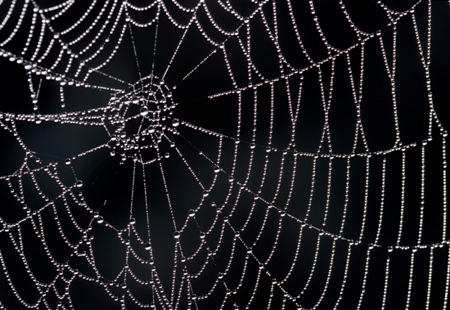Research at Massachusetts Institute of Technology (MIT) has revealed that the resilience of spider webs depends not only on the strength of the spider silk but also on its stretchiness and web structure.
 Spider Web. Photo: Francesco Tomasinelli and Emanuele Biggi
Spider Web. Photo: Francesco Tomasinelli and Emanuele Biggi
Associate professor of civil and environmental engineering at MIT, Markus Buehler, along with his colleagues have analyzed the structure of spider webs and found important properties related to the resilience of webs. The findings can help develop better damage-resistant synthetic materials and networked systems.
Spider silk is considered to be stronger than steel and is one among the strongest materials known to man. It derives its robustness from its stretchiness, a property which was considered as a weakness. When pulled, spider silk initially softens and stretches. When the pulling force is increased it stiffens. This property helps the spider silk resist damage.
The research team analyzed the response of materials to stress when they were arranged in a spider web pattern. Materials which initially are stretchy and then become “plastic” and others which performed like linear springs were not as effective in responding to the stresses.
Spider webs have a flaw-tolerant system. Damage that occurs is localized and can be repaired. Even if it is not repaired the web mechanically functions as before. The research team tested their findings on actual webs. Initially, the entire spider web deformed, but later only the threads on which the force was applied stretched out and became stiff. When more force was applied it broke. The team found that the web broke only where it was pulled.
In simulated studies spider webs were nearly able to withstand the strength of a hurricane. Buehler states that the way the spider web gains actual strength is more important than the strength factor itself. Materials with complex, non-linear responses can have significant advantages, he added.
Earthquake-resistant buildings dissipate energy to reduce load on their structure, and when the buildings fail, they fail completely. Based on the spider web principle, future buildings can be designed to flex to a certain level and then allow only certain structural elements to break. This will help the other parts of the building to survive. The building can also be repaired and demolition can be avoided. The same spider web design principles can be applied to armored vehicles and airplanes and networked systems.
The findings of the study have been published in Nature.